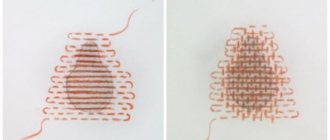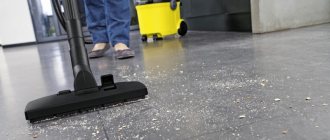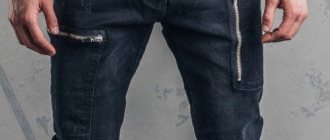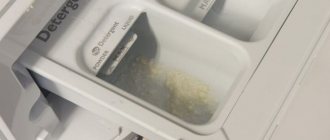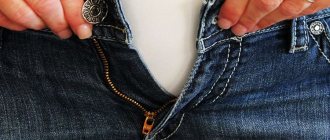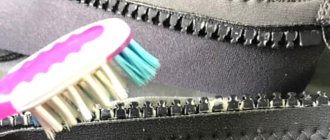Durable and practical jeans have helped each of us out more than once in a variety of situations. But sometimes even reliable jeans fail. And if you can still wear them with a hole in the leg (holes are even in fashion!), then scuffs between the legs have never been trendy. And they appear in this place quite often. And they do not delight with their appearance, but, on the contrary, become a cause of serious distress. After all, now comfortable jeans will have to be patched, or even replaced with new ones.
@Ledimai.ru
However, experienced women do not expect these troubles. They know how to prevent them, extending the shelf life of denim.
Features of the figure, physique
Oddly enough, all sorts of holes and abrasions in the pants can appear between the legs for the simple reason that the figure is not quite standard. For example, there are people whose legs, due to purely anatomical structure, do not touch each other. In this case, usually no problems arise with the product, so there is absolutely nothing to worry about. However, if the limbs are quite dense and full, then abrasions appear much more often. The fact is that when walking, your legs begin to rub against each other.
Thus, the fabric wears out many times faster, first abrasions appear, and then even holes. Therefore, those with full hips usually change their jeans more often, reports rsute.ru.
Emergency help
What to do if you urgently need to put on jeans and run errands? And, as luck would have it, the denim has frayed in the area between the legs? Don't panic. You can use an ambulance. There are special round-shaped adhesive patches. It is enough to fix them on the wrong side of the damaged area using an iron. This method is good when you need to prevent the formation of a hole. But keep in mind that the method is not designed for a long time. It will help only when the defect appears in an unforeseen situation.
Sooner or later the moment will come when the jeans will tear again and you will have to throw them away. But one Dutch resident couldn't accept the fact that he had to give up his Levi's trousers. He carefully patched them up for eight years. You can see the result for yourself. The wardrobe item began to bear little resemblance to the original. But the designers liked this idea, and they began to produce similar models that could be bought in one of the Amsterdam clothing boutiques. And the Dutchman who came up with all this became the embodiment of stubbornness.
Overweight
Extra pounds also do nothing to ensure that the fabric remains as good as new for years. It's the other way around. The product rubs between the legs many times faster than when the person is not overweight. In addition, a similar problem also occurs among athletes. They have fairly developed muscle mass, and their legs are dense. Therefore, they often rub against each other and all sorts of holes are formed.
How to sew pants between your legs - reasons for damage to pants and repair methods
Popular wisdom says: “You are greeted by your clothes,” so taking care of your wardrobe is one of the key factors in the desire to make a good impression on others.
However, quite often a situation arises when your favorite trousers rub between your legs. This can lead to the fact that a familiar wardrobe item can be thrown into the trash, and its owner can go to the store for a new pair of pants (unless, of course, the pants are made to order and the studio has not established a guarantee for its work). It is worth remembering that the larger the wear on the pants, the more time, effort and skill it will take to eliminate it, so you need to start repairing worn trousers as soon as the wear appears.
Preventing chafing is much easier than sewing up pants or putting patches on them. To do this, you need to understand why abrasions occur on new-looking trousers and how to avoid this. This article explains exactly why this happens, how to avoid such a situation, and also how to sew your pants between your legs unnoticed.
The quality of the fabric itself is poor
Not only excess weight or full hips can cause the product to lose its beautiful appearance. Those who own jeans with artificial abrasions may quickly become upset that the product will quickly become unusable. The fact is that such fabric is usually very thin. Therefore, it cannot withstand constant friction, washing, use and wears out many times faster than the dense version. If the fabric is supplemented with polyester or elastin, thanks to which it can stretch somewhat, then the product will last a little longer.
We work carefully
If your favorite jeans have become unusable, do not rush to throw them away, you will still have time. Let's try to repair it so that not a single hole is visible. First, let's look at how to repair a hole that looks like a cut line.
- For work, choose threads that match the tone of your denim. Begin by hand stitching from one side of the hole to the other, catching a thin layer of fabric.
- Then stitch down vertically and then backstitch. This method of darning will prevent the fabric from warping and tightening.
- Having completed the row horizontally, start working vertically, passing the needle between the threads. This way you will weave a new layer of fabric that will lie on top of the old one.
- Next, place a denser darning between these stitches. It should lie perpendicular to the stitches already sewn. You should end up with a patch in the form of a thread mesh.
- In one direction, we sew the base for the thread lattice, and in the other direction we make a dense lattice. This method was called “stuffing”.
You can also sew it on a machine if you have sewing skills.
- To repair large holes you will have to use patches. Place it at the bottom of the hole, baste it, and sew it with a zigzag in several lines. OLYMPUS DIGITAL CAMERA
- To prevent this patch from standing out, place the same piece of fabric on the other leg.
- A very good trick is to fold the edges.
- Sew close to the hem, almost without departing from the edge.
- Next, sew with a buttonhole stitch or other decorative stitch. If the pants are torn even in the most noticeable place, such a darning will be practically invisible.
Patch patches
There is another interesting, but at the same time very effective option for preserving jeans. So, you should simply take a piece of denim and sew it on the inside of the product. This way, the area there is somewhat compacted, and the jeans don't wear out as quickly as usual. Moreover, if there are at least minimal pellets, then it is best to remove them immediately using ordinary small nail scissors or a blade, but very carefully so as not to cut yourself.
How much does it cost to repair jeans?
Restoring jeans at home is cheaper than repairing them in a workshop, much less buying a new pair of trousers. Unnecessary scraps of denim can be found in every home. But it is best, of course, to use doublerin as a patch. It is sold in any craft store. A meter of material costs an average of 160 rubles. Usually it requires no more than 50 cm. Let's add to this the price of thread. It turns out that the entire repair, in extreme cases, will cost 100 rubles.
For comparison: atelier services will cost about 1000 rubles, buying new trousers is even more expensive. The difference is obvious.
other methods
The product should not be washed too often if you want to preserve it as long as possible. In this case, it is better to wash by hand and do not use conditioners or rinses with stain removers. They can only contribute to rapid wear.
In addition, it is recommended to turn the product inside out before washing. Also, if any stains appear, it is better to simply use regular laundry soap rather than putting the clothes in the washing machine.
When buying jeans, it is extremely important to make sure that they fit your figure and do not pinch anywhere. After all, narrow options will quickly wear out, because there is constant friction between the legs. If jeans are your favorite clothing, then it makes sense to buy two or three models of any shape and wear them every other day to extend their service life and not wear out one item.
Subject:
- life hacks
Why do jeans wear out?
To deal with a problem, you need to find out why it occurs in the first place. Why does the rest of the fabric remain intact, but in this place is worn out?
The main reason for this phenomenon is clear. Holes appear due to friction or excessive tension in the fabric from which the trouser parts are made . The problem arises in several cases and is related to the model and cut of the jeans, the quality of the denim and the characteristics of the owner of the pants.
- The model is not the right size . Moreover, if a large size of pants were chosen, they would be free in volume, the material would not experience tension. But if denim trousers are small, this causes holes to appear.
- Incorrect cutting , allowed by the manufacturer due to saving material, is another reason. With proper cutting, excessive tension of the fibers in the problem area does not occur while walking.
- The fabric is not of good quality . These pants became popular due to their durability, because at first they were made of canvas. However, today unscrupulous manufacturers produce excessively thin material, which quickly deteriorates with constant use.
- The individual characteristics of the owner can also affect their shelf life. Excessive fullness of your legs, peculiarities of gait and even the peculiar habit of sitting on a chair can lead to the fact that your jeans do not remain intact for as long as you would like.
Hole in nylon tights
Nylon is a light and fragile material that breaks at almost any snag. If you don’t have the time and money to buy a new pair, you can get used to it and carefully sew up the tights both on your fingers and in a visible place:
- Prepare a thin needle and thread that is as close in color to the product as possible. Silk threads or thread pulled from unnecessary tights are also suitable.
- Gently pinch the opposite edges at the base of the hole.
- Sew tights, sequentially picking up loops from different sides. Try not to miss a single one to prevent the material from spreading further.
- If possible, go over the seam with a clear varnish.
Nylon is a light and fragile material that breaks at almost any snag. Particular problems are caused by models without a sealed toe, which often cause inconvenience with holes in the toes. It turns out that torn tights are easier to throw away than to wear even under pants or long skirts. However, if you don’t have the time and money to buy a new pair, you can adapt and carefully sew them up:
- Prepare a thin needle and thread that is as close in color to the product as possible. Silk threads or floss are also suitable.
- Gently pinch the opposite edges at the base of the hole.
- Sew tights, sequentially picking up loops from different sides. Try not to miss a single one to prevent the material from spreading further.
- If possible, go over the seam with a clear varnish.
We suggest you read How to make a T-shirt fit
Rubbing technique
Previously, in the 70s, fashionistas and fashionistas used a piece of brick to make spectacular scuffs on their jeans at home. Today, jeans can be transformed in more reliable and humane ways.
- Using a utility knife, blade or scalpel. The technique is quite simple; using one of the tools, transverse short cuts are made at a distance of no more than 5 mm. Then, using tweezers, the horizontal white threads are carefully pryed up and taken out, and the dark vertical ones are pulled out. You can also use a knife, scalpel or blade to make noodles or cut a hole in your knee.
- Using scissors. The most convenient option is straight scissors with a sharp end, but manicure scissors are not suitable for this purpose; they are quite difficult to cut fabric evenly. Most often, scissors are used to make noodles, cut out large holes, or if it is necessary to make large cuts and abrasions.
- Using pumice, sandpaper or a fine grater. These items help create natural, natural abrasions of any intensity. To do this, stretch a slightly damp cloth and rub for a few minutes. If you rub long enough, you can make a hole, so be careful, the effect will be more noticeable as it dries. In addition, you can use pumice or sandpaper to process a previously cut hole, this will give it a natural look.
- Using bleach. This method is used quite rarely, but it is no less effective. You need to treat the previously designated holes with bleach, and then wash the jeans. Then you need to cut out the bleached area, leaving 1 cm around the entire perimeter. In the next step, the edges are ruffled with pumice. Such holes look beautiful and more natural.
Advice
For minor abrasions, it is easier to use a pumice stone, for noodles and longitudinal cuts, a stationery knife, and for holes, bleach and scissors.
Seams
High-quality jeans models are distinguished by neat seams made with strong and high-quality threads, which are very difficult not only to tear, but also to fray. They are stitched with neat stitches, one in one and even seams, which are visible on the reverse side. There are no threads hanging on the ends of the products or even on the pockets and there are no uneven stitches. It seems that even they are made professionally and with high quality, there is no negligence anywhere, even in the details. The zippers on these jeans are made of high quality and only from metal. Not a single thread, much less a piece of fabric, will ever get tangled in them, and using it is as easy as shelling pears. It quickly and easily unfastens and fastens, but does not come apart and holds tightly. The dog on this zipper is made of metal and looks like a work of art, especially on female models. It can also be used to determine the quality of the product itself.
